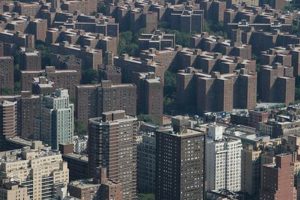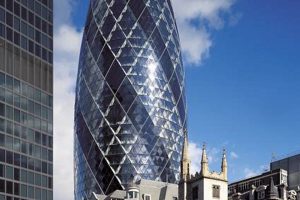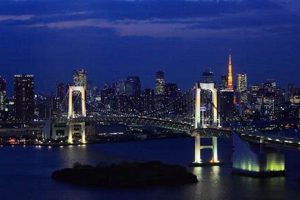Mumbai, the financial capital of India, is renowned for its impressive skyline adorned with towering skyscrapers. These architectural marvels have transformed the city’s landscape, making it a global hub of commerce and innovation.
Skyscrapers in Mumbai not only provide ample office space for national and multinational corporations but also contribute significantly to the city’s economy. They house prestigious financial institutions, IT firms, and multinational headquarters, facilitating a thriving business environment. Additionally, these high-rises offer unparalleled views of the city, making them sought-after destinations for residential and commercial purposes.
The construction of skyscrapers in Mumbai has been driven by the city’s rapid economic growth and the need for vertical expansion due to limited land availability. These buildings employ advanced construction techniques and sustainable design principles, showcasing India’s architectural prowess on the global stage. Notable examples include the iconic World One tower, the third tallest residential building in the world, and the upcoming Jio World Centre, set to be one of the tallest mixed-use developments globally.
1. Height
The towering height of Mumbai’s skyscrapers is a defining characteristic that sets them apart from other buildings in the city and contributes to their significance. Here are some key details to explore:
- Vertical Dominance: Mumbai’s skyscrapers dominate the city’s skyline, creating a visually striking and awe-inspiring urban landscape.
- Economic Symbolism: The height of skyscrapers is often associated with economic prosperity and development, reflecting Mumbai’s status as India’s financial capital.
- Architectural Innovation: Constructing skyscrapers requires advanced engineering and architectural techniques, showcasing Mumbai’s commitment to innovation and pushing the boundaries of design.
- Global Recognition: Mumbai’s skyscrapers have gained international recognition for their architectural excellence and have become iconic landmarks of the city.
In conclusion, the height of Mumbai’s skyscrapers is not merely a physical attribute but a testament to the city’s economic prowess, architectural ingenuity, and global standing.
2. Architecture
The architectural diversity of Mumbai’s skyscrapers is a testament to the city’s rich cultural heritage and its status as a global metropolis. These buildings embody a wide spectrum of styles, each style carrying its own unique story and significance.
- Modern Architecture: Characterized by clean lines, geometric shapes, and the use of glass and steel, modern architecture is a popular choice for Mumbai’s skyscrapers. These buildings exude a sense of sleekness, functionality, and urban sophistication.
- Art Deco Architecture: Art deco skyscrapers are a nod to Mumbai’s glorious past and its role as a melting pot of cultures. These buildings feature ornate facades, geometric patterns, and bold colors, reflecting the glamour and exuberance of the early 20th century.
- Neo-Gothic Architecture: Mumbai’s skyline is also graced by a few neo-Gothic skyscrapers, which blend traditional Gothic elements with modern architectural sensibilities. These buildings showcase intricate stonework, pointed arches, and stained glass windows, adding a touch of historical charm to the city’s modern landscape.
- Contemporary Architecture: The newest skyscrapers in Mumbai embrace contemporary architectural styles, pushing the boundaries of design and innovation. These buildings feature unconventional shapes, sustainable materials, and cutting-edge technologies, representing the city’s forward-thinking spirit and its commitment to architectural excellence.
The diverse architectural styles of Mumbai’s skyscrapers contribute to the city’s visual appeal and cultural significance, making it a vibrant and fascinating urban landscape that showcases the city’s rich heritage and its aspiration for the future.
3. Construction
Mumbai’s skyscrapers are not just architectural marvels but also showcases advanced construction techniques and sustainable design principles. These factors are crucial to the construction of skyscrapers, as they impact the buildings’ safety, efficiency, and environmental impact.
Advanced construction techniques, such as high-strength concrete and innovative structural systems, ensure that these skyscrapers can withstand the challenges of Mumbai’s dense urban environment, including high winds, seismic activity, and natural disasters. Sustainable design principles, on the other hand, focus on reducing the environmental impact of these massive structures, incorporating energy-efficient systems, rainwater harvesting, and green building materials.
The adoption of these advanced construction techniques and sustainable design principles in Mumbai’s skyscrapers is a reflection of the city’s commitment to sustainability and innovation. These buildings serve as examples of how modern architecture can be both environmentally conscious and structurally sound.
4. Business
The skyscrapers of Mumbai are not just architectural marvels but also economic powerhouses that drive the city’s financial success. These towering structures house major financial institutions, IT firms, and multinational headquarters, creating a thriving business ecosystem that contributes significantly to Mumbai’s economy. The presence of these businesses in skyscrapers is mutually beneficial, as it provides them with prime office space and access to a skilled workforce, while also contributing to the city’s overall economic growth and development.
For example, the Bandra Kurla Complex (BKC) in Mumbai is a prime example of how skyscrapers have fostered business growth. BKC is home to numerous skyscrapers that house major banks, insurance companies, and financial institutions. The concentration of these businesses in one area has created a financial hub that rivals other global financial centers. Similarly, the Nariman Point area in South Mumbai is another business district that is dominated by skyscrapers housing multinational corporations and IT firms.
The economic significance of skyscrapers in Mumbai extends beyond their role as office spaces. These buildings also generate revenue through retail, hospitality, and entertainment venues l
ocated within their premises. Additionally, the construction and maintenance of skyscrapers create employment opportunities in various sectors, further contributing to the city’s economy.
5. Residential
High-rise residential apartments have become an integral part of Mumbai’s skyscraper landscape. These apartments offer luxurious living spaces with breathtaking panoramic views of the city, making them highly sought after by affluent individuals and families.
The connection between high-rise residential apartments and skyscrapers is mutually beneficial. On the one hand, residential apartments provide a steady source of income for skyscraper developers and contribute to the overall profitability of these projects. On the other hand, skyscrapers offer residents exclusive amenities and facilities, such as swimming pools, fitness centers, and rooftop gardens, which enhance their living experience.
The presence of high-rise residential apartments in Mumbai’s skyscrapers has also had a positive impact on the city’s real estate market. These apartments have attracted a large pool of potential buyers, including both domestic and international investors, leading to increased property values and overall economic growth in the city.
In conclusion, high-rise residential apartments are a significant component of Mumbai’s skyscrapers, contributing to their economic viability and enhancing the overall quality of life for residents. The combination of luxurious living spaces and stunning city views has made these apartments a highly desirable choice for discerning homebuyers, further solidifying Mumbai’s position as a global metropolis.
6. Landmarks
Iconic skyscrapers have transformed into prominent landmarks, shaping the identity and global recognition of Mumbai’s skyline. These architectural marvels stand as symbols of the city’s economic prosperity, architectural prowess, and cultural significance.
- Global Recognition: Mumbai’s iconic skyscrapers have gained international acclaim for their architectural brilliance and engineering feats. They have become symbols of India’s growing stature on the global stage, attracting tourists and business travelers alike.
- Tourism and Economic Impact: These landmark skyscrapers have become major tourist destinations, drawing visitors from around the world. They contribute significantly to Mumbai’s tourism industry, generating revenue and creating employment opportunities.
- Cultural Significance: Iconic skyscrapers have become deeply intertwined with Mumbai’s cultural fabric. They serve as backdrops for films, literature, and art, inspiring creative expression and shaping the city’s identity.
- Architectural Innovation: The design and construction of Mumbai’s iconic skyscrapers showcase the city’s commitment to architectural innovation and pushing the boundaries of engineering. These buildings employ cutting-edge technologies and sustainable practices, setting new standards for urban development.
In conclusion, the iconic skyscrapers of Mumbai have transcended their functional purpose, becoming landmarks that embody the city’s economic vitality, cultural heritage, and architectural prowess. They serve as symbols of Mumbai’s aspirations and its position as a global metropolis.
7. Economic growth
The construction and presence of skyscrapers in Mumbai are closely intertwined with the city’s rapid economic growth. Skyscrapers serve as physical manifestations of a thriving economy, reflecting the increasing demand for office space, residential units, and commercial developments. The presence of numerous skyscrapers in Mumbai indicates a robust business environment, attracting domestic and international companies seeking to establish a presence in the city.
The construction of skyscrapers in Mumbai has played a significant role in driving economic growth. The development of these buildings requires substantial investment, creating employment opportunities in various sectors such as construction, architecture, engineering, and real estate. Moreover, skyscrapers contribute to the city’s tax base and generate revenue for the government, which can be utilized for further infrastructure development and public services.
The presence of skyscrapers in Mumbai has also had a positive impact on the city’s overall infrastructure and connectivity. The construction of skyscrapers often involves the development of surrounding areas, leading to improved transportation networks, public utilities, and green spaces. This, in turn, enhances the quality of life for residents and makes the city more attractive for businesses and investments.
In conclusion, the construction and presence of skyscrapers in Mumbai are important indicators of the city’s rapid economic growth. Skyscrapers not only provide essential space for businesses and residents but also contribute to job creation, revenue generation, and infrastructure development. Understanding this connection is crucial for policymakers and urban planners seeking to promote sustainable and inclusive economic growth in Mumbai.
8. Vertical expansion
In Mumbai, where land is a precious commodity, skyscrapers have emerged as an ingenious solution to accommodate the growing needs of its population and businesses. Vertical expansion through skyscrapers offers several advantages in a city with limited land availability.
- Efficient Land Utilization: Skyscrapers allow for maximum utilization of limited land space by building upwards instead of outwards. This efficient use of land is particularly crucial in densely populated urban areas like Mumbai.
- Increased Density: Skyscrapers enable higher population density within a smaller geographical area. By accommodating more people in vertical structures, Mumbai can accommodate a larger population without sprawling endlessly outwards.
- Infrastructure Optimization: Vertical expansion through skyscrapers reduces the need for extensive horizontal infrastructure, such as roads and utilities. This optimization leads to more efficient resource allocation and reduced environmental impact.
- Enhanced Connectivity: Skyscrapers often incorporate advanced transportation systems, such as high-speed elevators and sky bridges, which improve connectivity within the building and with surrounding areas. This enhanced connectivity facilitates efficient movement of people and goods.
In Mumbai, the construction of skyscrapers has played a pivotal role in accommodating the city’s burgeoning population and businesses. Vertical expansion has allowed Mumbai to grow upwards, preserving valuable land for essential amenities like parks, green spaces, and affordable housing. Skyscrapers have become an integral part of Mumbai’s urban fabric, contributing to its economic prosperity and global recognition.
9. Global recognition
The architectural excellence of Mumbai’s skyscrapers has garnered widespread international recognition, placing the city on the global map of architectural innovation and design. This recognition stems from several key factors that contribute to the unique and captivating character of Mumbai’s skyscrapers.
- Innovative Design: Mumbai’s skyscrapers showcase a diverse range of innovative designs that push the boundaries of architectural expression. From the intricate facade of the World One tower to the soaring height of the Imperial Towers, each skyscraper is a testament to the creativity and vision of renowned architects.
- Sustainable Architecture: Many skyscrapers in Mumbai incorporate sustainable design principles, demonstrating the city’s commitment to environmental responsibility. The use of energy-efficient materials, rainwater harvesting systems, and green spaces contribute to the overall sustainability of these buildings.
- Cultural Influences: Mumbai’s skyscrapers often reflect the city’s rich cultural heritage and vibrant urban fabric. The incorporation of traditional design elements, such as intricate jali work and vibrant colors, adds a distinct character to these architectural marvels.
- Landmark Status: Several skyscrapers in Mumbai have become iconic landmarks, symbolizing the city’s economic prosperity and architectural prowess. The Bandra-Worli Sea Link and the Jio World Centre are just a few examples of skyscrapers that have gained global recognition for their architectural significance.
The international recognition of Mumbai’s skyscrapers is a testament to the city’s commitment to architectural excellence and innovation. These skyscrapers not only provide functional spaces but also serve as symbols of Mumbai’s growing stature as a global metropolis.
FAQs
Skyscrapers have become an integral part of Mumbai’s skyline, transforming the city into a global hub of commerce and innovation. This section aims to address commonly asked questions and misconceptions surrounding Mumbai’s iconic skyscrapers.
Question 1: What factors have contributed to the rapid construction of skyscrapers in Mumbai?
Mumbai’s skyscrapers are a response to the city’s rapid population growth and limited land availability. Vertical expansion through skyscrapers has allowed Mumbai to accommodate its growing population and businesses while optimizing land use.
Question 2: Are Mumbai’s skyscrapers designed to withstand seismic activity?
Yes, Mumbai’s skyscrapers are designed to withstand earthquakes. The city lies in a seismic zone, and skyscrapers are constructed using advanced engineering techniques and earthquake-resistant materials to ensure the safety of occupants during seismic events.
Question 3: How do skyscrapers contribute to Mumbai’s economy?
Skyscrapers house major financial institutions, IT firms, and multinational headquarters, playing a significant role in Mumbai’s economic growth. These buildings provide office spaces, attract foreign investments, and generate revenue for the city.
Question 4: What are the environmental implications of constructing skyscrapers?
Skyscrapers consume significant energy and resources during construction and operation. However, many modern skyscrapers in Mumbai incorporate sustainable design principles, such as energy-efficient lighting, rainwater harvesting, and green spaces, to minimize their environmental impact.
Question 5: How do skyscrapers impact the quality of life in Mumbai?
Skyscrapers offer luxurious residential apartments with stunning views, contributing to a higher quality of life for residents. Additionally, they often incorporate amenities such as fitness centers, swimming pools, and retail spaces, enhancing the overall living experience.
Question 6: What are some of the challenges associated with constructing and managing skyscrapers?
Constructing and managing skyscrapers require specialized expertise and resources. Challenges include ensuring structural stability, maintaining building systems, and addressing safety concerns at significant heights.
In conclusion, Mumbai’s skyscrapers are not just architectural marvels but also symbols of the city’s economic growth and global recognition. Their design, construction, and management involve complex considerations, highlighting the expertise and innovation that shape Mumbai’s urban landscape.
Transition to the next article section: Exploring the Architectural Styles of Mumbai’s Skyscrapers
Tips Related to Skyscrapers of Mumbai
Skyscrapers have transformed Mumbai’s skyline, offering valuable lessons in architecture, urban planning, and sustainable development. Here are five key tips to consider when exploring or constructing skyscrapers in Mumbai:
Tip 1: Embrace Innovative Design: Mumbai’s skyscrapers showcase bold and innovative architectural designs. Encourage architects to push the boundaries of creativity while ensuring structural integrity and functionality.
Tip 2: Prioritize Sustainability: Incorporate sustainable practices into skyscraper construction and operation. Utilize energy-efficient materials, rainwater harvesting systems, and green spaces to reduce environmental impact.
Tip 3: Maximize Natural Light and Ventilation: Design skyscrapers that maximize natural light and ventilation to create comfortable and healthy indoor environments for occupants.
Tip 4: Enhance Connectivity and Accessibility: Integrate skyscrapers with efficient transportation systems, including sky bridges, high-speed elevators, and public transit connections, to enhance accessibility and reduce traffic congestion.
Tip 5: Consider Cultural Context: Respect Mumbai’s rich cultural heritage by incorporating traditional design elements or motifs into skyscraper facades and interiors.
These tips can help architects, developers, and urban planners create skyscrapers that not only meet functional needs but also contribute positively to Mumbai’s architectural landscape and quality of life.
Conclusion
Skyscrapers have reshaped Mumbai’s skyline, transforming it into a global metropolis. Their towering presence signifies the city’s economic prowess, architectural ingenuity, and commitment to sustainable growth. From their innovative designs to their contributions to the economy, Mumbai’s skyscrapers stand as testaments to the city’s ambition and drive.
As Mumbai continues to grow and evolve, skyscrapers will undoubtedly play an increasingly important role. By embracing sustainable practices, fostering architectural innovation, and integrating these structures seamlessly into the urban fabric, Mumbai can harness the full potential of skyscrapers to create a thriving and livable city for the future.







